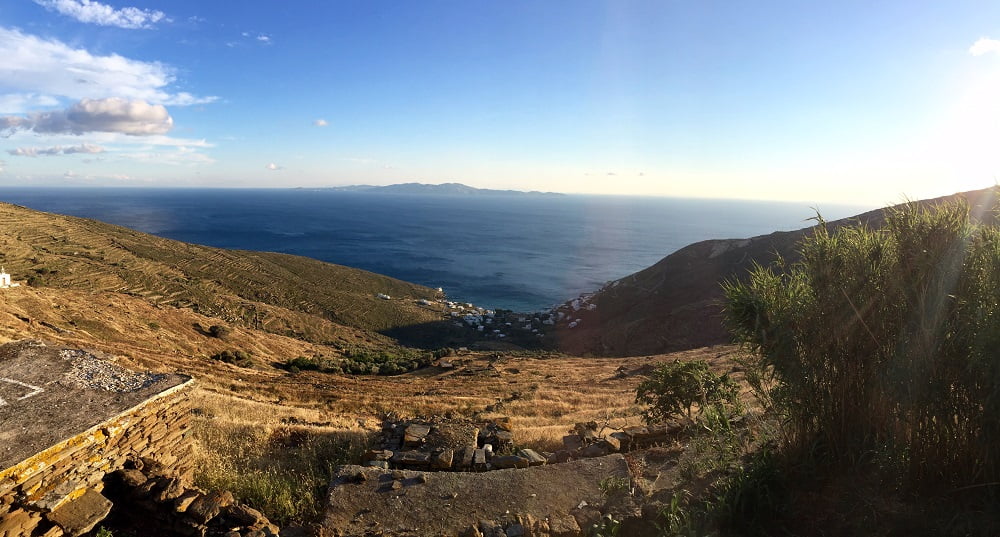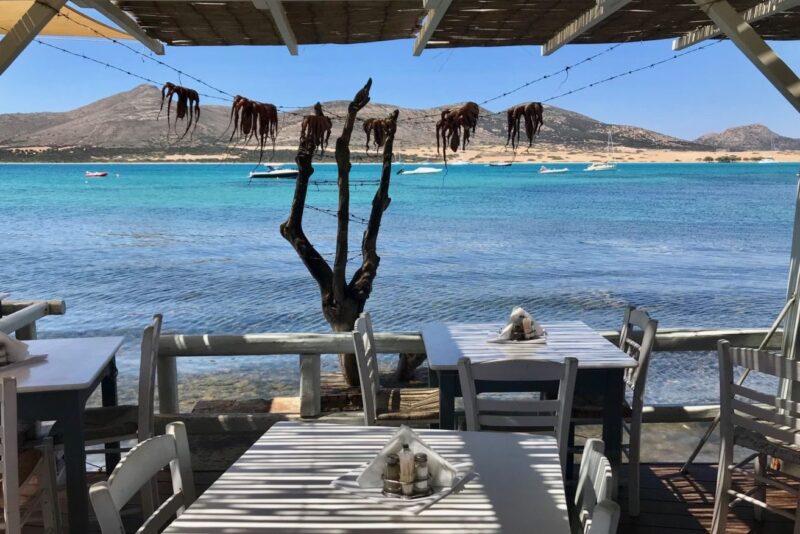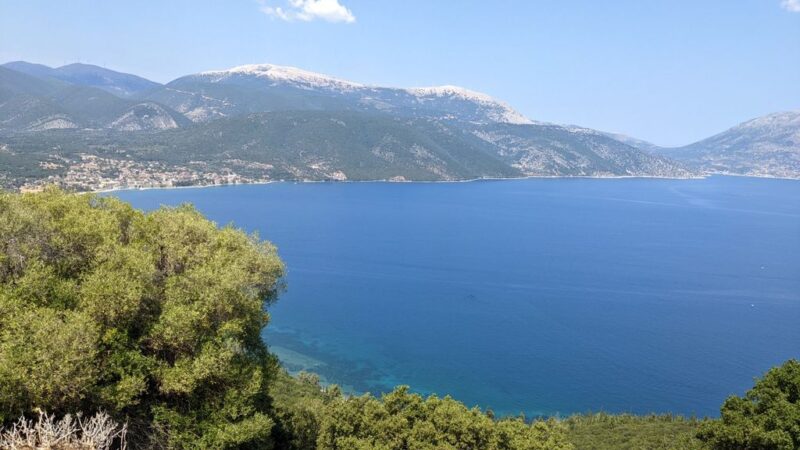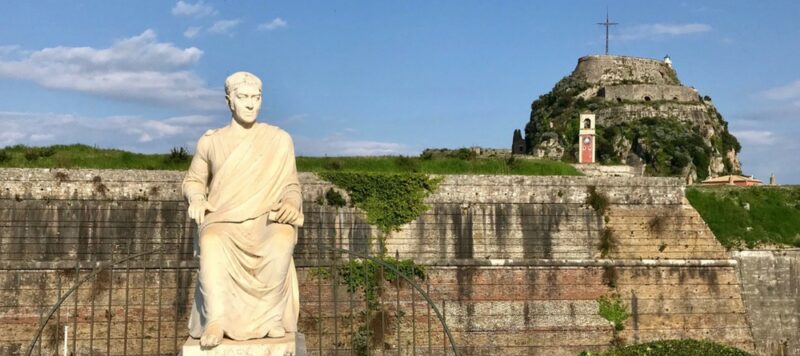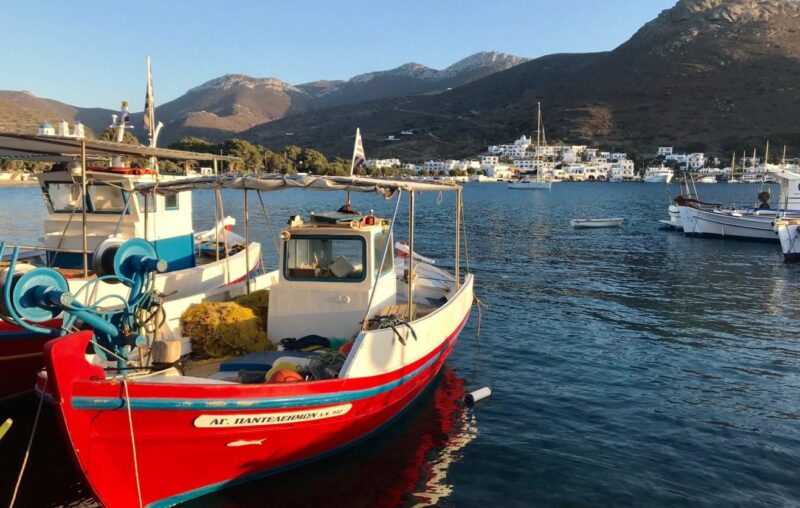Tinos, an island of the Cyclades close to the mainland, is a small preserved paradise to visit. In addition to its marble museum, discover its chapels, its picturesque villages, its hiking trails dotted with pigeon houses, its beaches… If you are wondering what to do in Tinos, here is an overview of the wonders to see on this island. And at the end of the article, we give you our tips for getting there, finding accommodation and getting around.
1 – Visit the church of Panagia, the Greek Lourdes
Tinos the pious. Tinos is one of the largest islands of the Cyclades. Its capital has a church “Panagia” comparable to Our Lady of Lourdes. For the record, in 1822, a nun from the Kekronouvio convent had a dream that told her where a miraculous icon of the Virgin and Child, painted according to legend by the Evangelist Luke, was hidden. Once found, this icon was quickly attributed with extraordinary healing virtues and, today, “Tinos-ville” knows an important religious tourism. Every year on August 15, the day of the Assumption of Mary, thousands of pilgrims flock to Tinos to take part in religious celebrations and processions around the church. It’s a major event that gives rise to festivities and a unique spiritual atmosphere.
Apart from this church, Tinos is dotted with more than 750 churches and chapels with singular bell towers, more than the Vatican! A large part of them are Catholic. Also among the must-sees are the Sacred Heart Church in Xombourgho and the Ursuline Convent in Loutra.
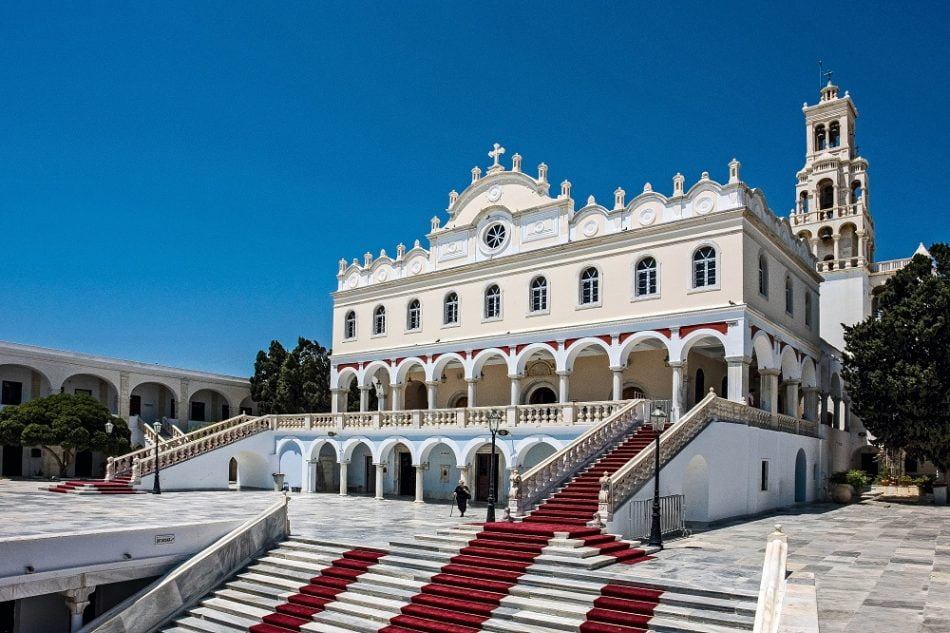
2 – Discover Tinos, a hiker’s paradise
What to do in Tinos? A hike of course!
This island of a thousand dovecotes is crossed in its entire length by a chain of mountains with steep peaks, whose highest peak, Mount Tsikna, rises to 725 meters. Its rugged landscapes, its small rocky paths and its large natural spaces, make it an exceptional site for hikers. The Terrain Edition Maps have very nice maps: “hiking in Tinos” published by the cultural association “Archipelagos”. Note also that wild creeks await hikers for refreshing swims!
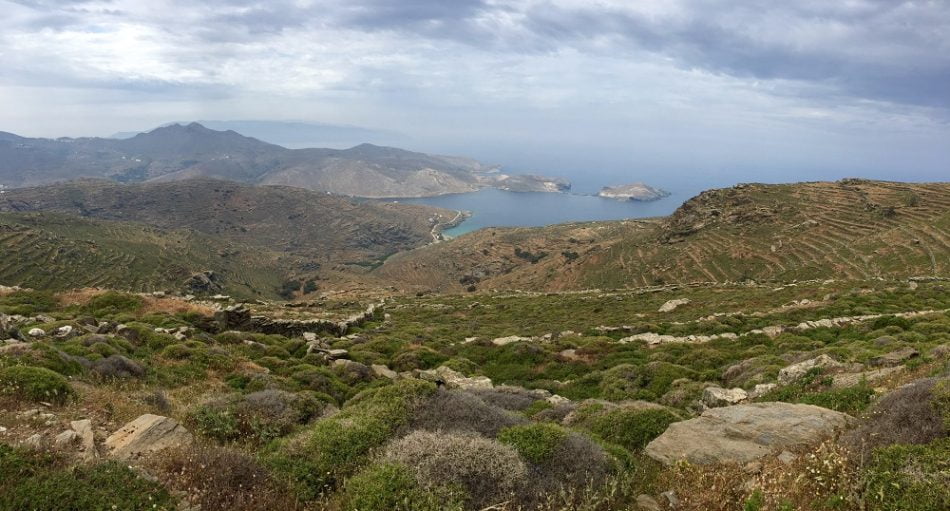
Basically, we recommend climbing to the top of Exombourgo, a large rock that rises to 640 meters with the remains of a Venetian citadel on its summit that was besieged and destroyed in 1715. The view of the Aegean Sea and the nearby islands is impressive! The hiking trail (it climbs but it is easy) starts from the village of Xinara.
Here are some of the most popular walks in Tinos
- Livada to Falatados trail: This hike starts in the village of Livada and takes you along picturesque paths to the charming village of Falatados. You’ll pass through lush green landscapes, olive groves and fields, while admiring the island’s natural beauty. The walk takes around 2-3 hours.
- Hiking from Tinos to Pyrgos: This hike links the main town of Tinos with Pyrgos, a traditional village renowned for its preserved architecture. You’ll walk along well-marked paths and discover peaceful rural landscapes, picturesque churches and narrow streets. The walk takes around 3 to 4 hours.
- Volax to Komi hike: This hike lets you explore the unique Volax region, famous for its granite rock formations. You’ll set off from the village of Volax and walk through spectacular scenery, with giant rocks dotted all around you. The hike takes around 2-3 hours.
- Kardiani to Panormos hike: This hike starts in the charming village of Kardiani and takes you to the picturesque coastal village of Panormos. You’ll enjoy superb views of the Aegean Sea as you walk along winding paths through the Tinosian countryside. The walk takes around 2-3 hours.
A word of advice: make sure you wear appropriate hiking boots, and bring water, snacks and a stick to prevent snakes!
3 – Wander through the picturesque villages of Tinos
Among the things to do in Tinos, visiting the villages is also a must.
Tinos has about 45 picturesque villages, which have preserved their traditional character and distinct vernacular architecture. They are snaked with alleys and arcades. Their whitewashed houses with sober lines, have a flat roof decorated with a beautiful chimney, often consisting of an earthen pot, pierced and decorated. The top of the doors is often decorated with marble lanterns, and openwork and sculpted marble lintels, the hyperthyras*. Sometimes the upper part of the facades is embellished with slate decorations, reminiscent of those of the pigeon houses. These, although present in other islands of the Cyclades, represent a typical work of art of Tinos. The most beautiful ones are located in the central part of the island and date from the 18th and 19th centuries (stop at the village of Tarampados).
The interesting villages are Falatados, Kardiani, Dio Choria, Pirgos, Volax, Isternia and Agapi.

*hyperthyras: These marble sculptures adorn the tops of doors and windows. The variety of carved motifs is astonishing. They make a discreet but undeniable contribution to the island’s charm.
4 – Focus on three emblematic Tinos villages
Volax and its charming little streets
Volax and its lunar landscape of gigantic pebbles from nowhere. It’s famous for its unique landscape of round rock formations sculpted by erosion. Scattered throughout the village, at the bend in an alleyway, on doors, shutters or walls, you’ll discover poems by famous Greek poets (Yorgos Seferis, Nikos Kavadias…). Volax is also known for its traditional basketry crafts. You can find many locally-made wicker and basketry products in the village stores.
Kardiani/Isternia, two pretty villages with extraordinary views over the Aegean Sea.
Kardiani – Built amphitheatrically on the slopes of Mount Pateles, this village boasts breathtaking views of the Aegean Sea. The village is characterized by its narrow streets, whitewashed houses (this is the Cyclades) and well-kept gardens filled with colorful flowers.
Isternia – A few kilometers north of Kardiani lies Isternia, another of Tinos’ enchanting villages. One of Isternia’s strong points is undoubtedly its marble craftsmen, who have been working with this craft for centuries, producing intricate sculptures and works of art.
Pyrgos, the captivating
Museum of the Artist – Pyrgos is home to the Museum of the Artist, dedicated to the life and work of Greek sculptor and painter Yannoulis Halepas. The museum exhibits some of his sculptures and works, giving visitors a better understanding of his artistic legacy and influence on Greek art.
Artisan workshops – Pyrgos is renowned for being home to many talented artisans, including marble sculptors and local artists. Visitors can explore the workshops and see the craftsmen at work on marble pieces and other traditional art forms.
Churches and chapels – Like most Greek villages, Pyrgos boasts magnificent churches and chapels that reflect the faith and religious tradition of the local people. The Church of the Virgin Mary (Panagia Evangelistria) is particularly important for pilgrims, as it houses the miraculous icon of the Virgin Mary of Tinos.
Traditional architecture – Strolling through the narrow streets of Pyrgos is another picturesque experience. Whitewashed houses, cobbled staircases and shady squares create an authentic, welcoming atmosphere.
Panoramic views – From the top of Pyrgos, visitors can enjoy breathtaking panoramic views of the island and the surrounding Aegean Sea. It’s an ideal place to watch the sunset and take memorable photos.

5 – Enjoy the cultural life of the Tiniots!
Museums and cultural events in Tinos
On the cultural level, we highly recommend the museum of the Greek artist Tsoklis in Kambos and the marble museum in Pyrgos. But also, the Archaeological Museum in Chora, the one of the sculptor Yiannoulis Chapelas in Pyrgos, the archaeological area of Kionia and the ruins of the Castle of Xombourgho to name a few.
The marble museum exhibits the life cycle of marble, from the quarry to the workshop. This museum is really interesting for children but not only, it is possible via an application to make a treasure hunt in the museum. Admission (2021 rate): 4 euros.
The summer months are also animated by numerous cultural events. Theater, songs, concerts, village festivals, exhibitions of paintings, sculptures… With also the possibility of following courses of plastic arts, or of ceramics.
Watch out for the summer meltem, a seasonal wind that blows in the Aegean region, bringing strong, constant winds during the summer months.

The pigeon lofts of Tinos and their mystery
Did you know? Surely you’ve noticed these white towers with their fine geometric decoration? These are the dovecotes of Tinos, and there used to be around a thousand of them on the island. The first appeared in the 13th century, during the Venetian occupation. Their construction continued until the 19th century. These dovecotes embody the identity of the Tinos landscape, and also envelop it in a mystery that is not without charm…
6 -Taste the local cuisine
But make the most of your stay in Tinos to sample the delicious local cuisine. Don’t miss out on specialities such as :
- Louza, smoked ham
- Roveï, traditionnal cheese
- Tinos artichokes
- And local pastries, including the famous pastéli (sesame sweets) and amigdalota (alomond cakes).
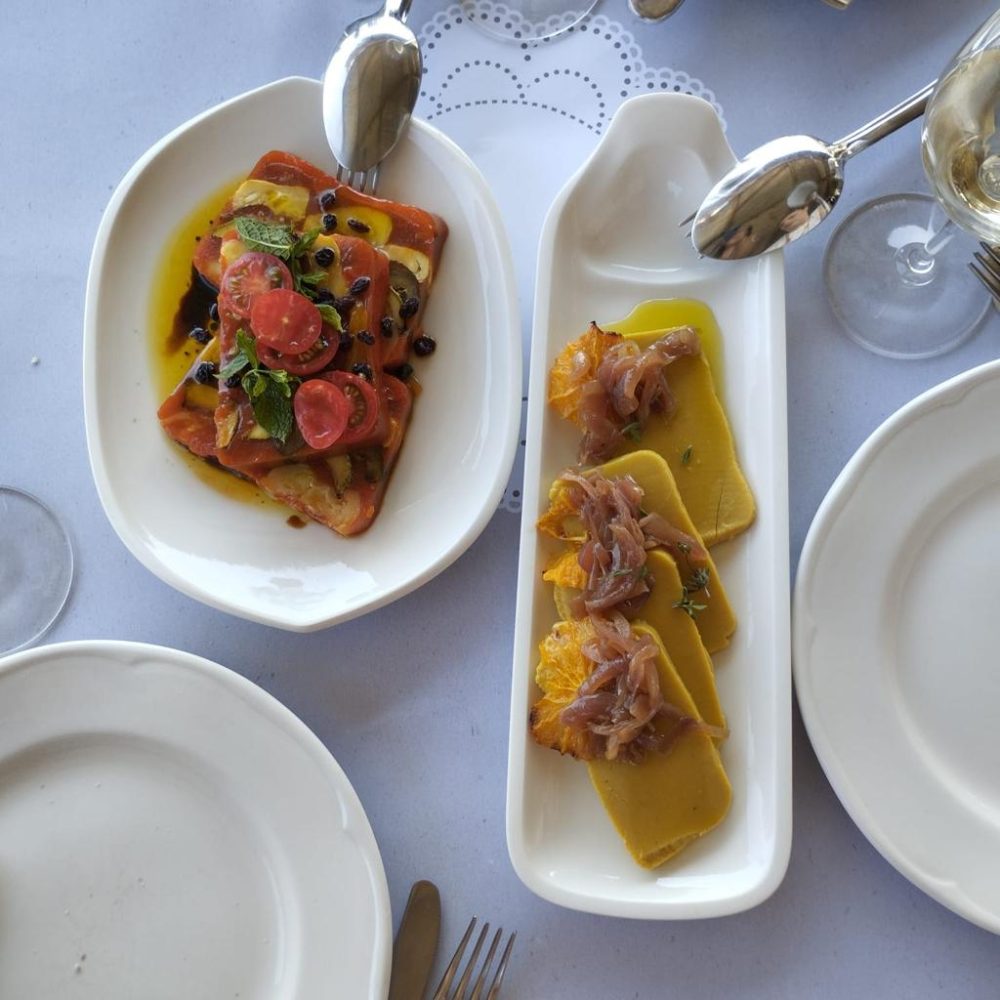
In this second article: restaurant recommendations, must-have products, and the most beautiful beaches…
Practical information for Tinos
Here are the websites we regularly use to organize a stay on an island or elsewhere in Greece:
- Ferry Hopper, the essential tool for finding out about the different ferry routes and booking directly online.
- For our accommodation searches, we also usually use Booking. This site offers a wide range of accommodation: hotels, apartments, but also private homes, villas… If you’re looking for a house with your feet in the water: we recommend Villa Elia.
- Finally, to visit the island of Tinos, we recommend renting a car. This will give you the freedom to roam the island’s back roads in search of hidden beaches or isolated villages…
But don’t worry: we’ve put together all the essential practical information you need to make your trip to the island of Tinos a dream come true in this article!
This article was written by Myriam Elice
